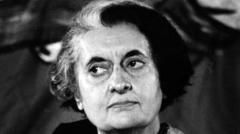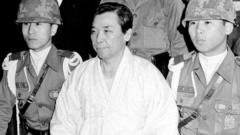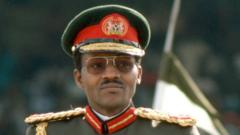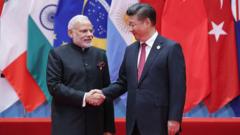Historian Srinath Raghavan's new work unveils the ambitions for a presidential system in India during the 1970s, highlighting efforts under Indira Gandhi’s government to centralize power amid a climate of suspended civil liberties.**
Revisiting India's Near Shift to Presidential Rule During the Emergency Era**

Revisiting India's Near Shift to Presidential Rule During the Emergency Era**
A historical analysis of the proposed transition from parliamentary democracy to a presidential system in India during Indira Gandhi's controversial Emergency period.**
During the mid-1970s, India found itself in the throes of unprecedented political turmoil as Prime Minister Indira Gandhi imposed the Emergency, a period marked by the suspension of civil rights and the suppression of political dissent. Within this troubling context, historian Srinath Raghavan exposes the covert ambitions of Gandhi's Congress party to transform India's democratic framework, as outlined in his book *Indira Gandhi and the Years That Transformed India*.
The book sheds light on how Gandhi's senior bureaucrats and loyalists began advocating for a shift towards a presidential system—an idea reminiscent of Charles de Gaulle’s centralized governance in France. Their vision entailed consolidating power in the hands of the presidency while diminishing the judiciary’s role and rendering Parliament largely symbolic. Raghavan notes that this push began following a September 1975 letter from BK Nehru, a key advisor, advocating for an overhaul of India's parliamentary democracy. Nehru argued that the existing system was inadequate for addressing national needs and proposed a model where a directly elected president could enact essential, though potentially unpopular, decisions.
As this dialogue unfolded, key figures within the government expressed enthusiasm for a more authoritarian structure. Certain Congress leaders even suggested that Gandhi be appointed "President for life." Despite the excitement, Gandhi herself remained non-committal while allowing the development of proposals for an overhaul of the Constitution that would enhance executive powers and limit judicial oversight.
The culmination of this ideological shift was evident in the Forty-second Amendment Act passed in 1976, which significantly augmented Parliament's authority and constrained judicial review. Although it did not establish a formal presidential system, it did instill a powerful executive branch at the expense of checks and balances.
The dangerous flirtation with centralizing authority and sidelining democratic governance didn’t come without pushback. Following a period of political upheaval and Gandhi's electoral defeat in 1977, the incoming Janata Party sought to dismantle these authoritarian changes through amendments aimed at restoring democratic protocols.
Gandhi returned to power in 1980 but remained entangled in discussions around presidential governance, especially in 1982 as President Sanjiva Reddy's term neared its end. This time, Gandhi pondered stepping down to assume the presidency herself, revealing her desire to revitalize the Congress party from a central executive position. Despite her serious consideration, she ultimately chose to appoint a loyal ally, Zail Singh, as president instead.
The reflections within Raghavan's narrative provoke questions about the resilience of India's parliamentary democracy amidst bouts of authoritarian temptation. Although conversations regarding a presidential system lingered within the Congress party until even after Gandhi's assassination in 1984, India's governance remained firmly rooted in its parliamentary traditions, reinforcing the notion that consolidation of power is often met with skepticism in democratic societies.




















